Over 5 studio albums, Speak Speak ventured into evermore experimental sonic territory to pursue their uncompromising creative imaginative and prescient…
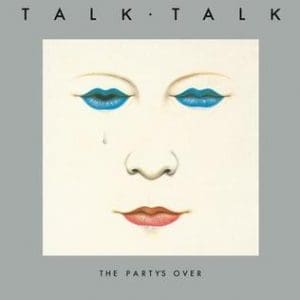 The Social gathering’s Over
The Social gathering’s Over
Launched July 1982
Recorded 1981-1982
Label EMI
Chart Place UK No.21 and US No.132
For nearly all of their extraordinary, ground-breaking profession, Speak Speak’s music was timeless and visionary – freed from the shackles of faddish genres and residing in a rarefied weightless realm of its personal making. However their 1982 debut may be very a lot of its time, an early-80s fretless bass sound imbued with strident synth textures. It was, sarcastically sufficient, a totemic instance of the New Romantic motion that frontman Mark Hollis particularly grew rapidly to detest and set about kicking towards.
There was, although, all the time one thing ‘different’ about this London outfit. They might have been groomed as poster boys in the identical mould as Duran Duran however they had been reduce from very completely different fabric.
Hollis’ mournful croon – he was happier namechecking Otis Redding as an affect than any of his contemporaries – and even the downbeat, cynical title of this debut is proof of this; The Social gathering’s Over is hardly the call-to-arms that many bands would announce their arrival with.
Hollis had beforehand dipped his toe into punk-pop with The Response – they launched their solely single I Can’t Resist in June 1978 – earlier than forming Speak Speak. He introduced a a lot wider vary of influences to the desk; experimental jazz icons John Coltrane and Ornette Coleman, plus prog rock mainstays King Crimson and Pink Floyd.
Early Speak Speak demos had been produced by Jimmy Miller, an unlikely foil who had beforehand helmed classic-era Rolling Stones and Visitors albums amongst others. For his or her debut, although, EMI turned to Colin Thurston, a veteran of the spiky likes of Journal, however extra pertinently the person who had produced Duran Duran’s eponymous first LP.
Timeless & Visionary
Speak Speak’s paymasters had been eager for them to place themselves as a considerate faction inside the New Romantic motion. The band supported Duran throughout an in depth winter tour of 1981, an expertise Hollis discovered completely dispiriting when confronted with the zeal of a rabid mainstream pop fanbase.
Thurston threw each 1982 manufacturing trick within the ebook into the combination: digital drums, a Fairlight synth, fretless bass and faux strings. Nonetheless, the songs and preparations stay singularly sturdy with Speak Speak and Sweet particularly rising above their artificial environment.
The previous opens the album as a canny train in model consciousness with a hooky “Hey! Hey!” chorus within the intro. The Monkees, they very a lot aren’t, although. The truth is, Speak Speak might be argued to be a lyrical takedown of the New Romantic motion itself, railing towards its superficiality.
The introspective It’s So Severe is pure synth-pop with a decidedly downbeat pallor: “I’ve given all the things, With nothing in return.”
Paul Webb’s bass-playing on At present, whereas glorious, is locked into the period – a mode that may be virtually trademarked by tremendous session man Pino Palladino. There’s proof of Hollis’ punky roots on Hate and he casts himself as a societal misfit throughout Have You Heard The Information, sitting outdoors the glamorous frontman characterisation of contemporaries Le Bon and Hadley. Nonetheless, the epic grandiosity of closing ballad Sweet proved they may swoon with the most effective of them.
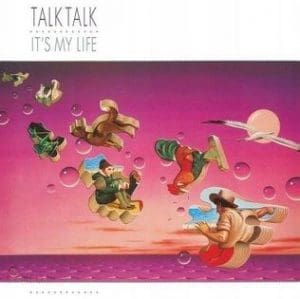 It’s My Life
It’s My Life
Launched Feb 1984
Recorded 1983
Label EMI
Chart Place UK No. 35 and US No.42
Although Colin Thurston piloted debut The Social gathering’s Over to a hair’s breadth outdoors the Prime 20 within the UK album charts, asserting Speak Speak’s arrival in some type, Hollis was dissatisfied with the best way he’d softened the band’s dwell sound.
Chris Thomas – the seasoned producer who had overseen albums by Roxy Music and By no means Thoughts The Bollocks by the Intercourse Pistols, was within the body to work on album two as was Rhett Davies, the producer/engineer with a sterling monitor document of collaborating with Brian Eno, Roxy Music, and who’d lately teamed up with OMD on Dazzle Ships.
Davies had already labored with Speak Speak on My Silly Good friend, a grittier sounding non-album monitor launched as a single in 1983 that did not chart within the UK however did respectable enterprise in Europe, making No.7 in Italy and illustrating how they had been starting to emerge as main gamers on the Continent.
For the It’s My Life album, Hollis sought a extra pristine vocal sound, harder rhythm part and wished the synths positioned decrease within the combine – his want for a extra pure method freed from artificial intervention was starting to indicate itself.
Change Of Path
The album marks a key level within the band’s improvement, too, as unique keyboardist Simon Brenner departed. Ostensibly, Speak Speak had been right down to a trio of Hollis, Webb and drummer Lee Harris, however unofficial fourth member Tim Friese-Greene would develop into Mark’s primary co-writer in addition to the band’s keyboardist, programmer, musical arranger and producer.
Hollis was impressed by the variety of Friese-Greene’s manufacturing CV; he created novelty hit The Lion Sleeps Tonight by Tight Match and labored with The Nolans, Thomas Dolby and Blue Zoo.
By now, Speak Speak had wholly discarded any hyperlinks with the New Romantic motion – It’s My Life retains components of synth-pop but it surely’s much less clearly trend-chasing than its predecessor.
A lot misunderstood opener Dum Dum Lady is a heartfelt anti-prostitution protest track and the downbeat Such A Disgrace sees Hollis flip to one in all his favorite books for inspiration, The Cube Man by Luke Rhinehart. The subversive and controversial novel instructed the story of a psychiatrist who decides the course of his life on the roll of a cube. Hollis was intrigued by the chaos that methodology would deliver to at least one’s existence.
The title monitor, arguably the band’s first gilt-edged basic, has a beautiful maturity to it and boasts one in all Friese-Greene’s best maximalist productions. By now, Hollis’ thoroughgoing confidence as a soulful vocalist shines via on the likes of Tomorrow Began and Does Caroline Know.
Mike Oldfield’s bassist Phil Spalding makes an uncredited look on The Final Time – Hollis and Friese-Greene’s multi-take method to his session can be a working observe they’d take to exhaustive extremes on subsequent albums.
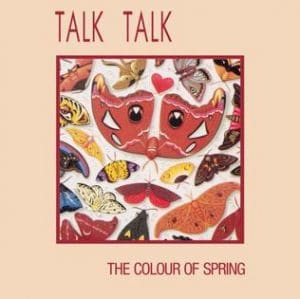 The Color Of Spring
The Color Of Spring
Launched Feb 1986
Recorded Battery Studios, Videosonics Studios, 1985
Label EMI
Chart Place UK No.8 and US No.58
The watchword for album three is ‘natural’. “That entire synth aspect – get it within the bin!”, Hollis instructed interviewer Jim Irvin in 1997 about its change of path. He was equally combative about artificial devices a decade earlier, little doubt angering Electronics And Music Journal as he proclaimed to their journalist: “I completely hate synthesisers. In the event that they didn’t exist, I’d be delighted.”
The band had been glad to excise all vestiges of synth-pop from their sound and The Color Of Spring would develop into their biggest-selling album.
It sits on the apex of the melodic, typical songwriting method of their first two albums and the extra experimental atmosphere of remaining efforts Spirit Of Eden and Laughing Inventory. The right midpoint, in actual fact, and sometimes underappreciated amid the outstanding affection during which these final two LPs are held.
As would develop into de rigueur for Speak Speak, the album was painstakingly assembled within the studio with an enormous array of visitor musicians. At their most centered, Hollis and co-writer Friese-Greene can be within the studio in 12-hour shifts, six days per week, throughout periods that lasted 9 months.
Natural Method
Texturally, piano, organ and guitar dominate because the band imbue a extra pure musicality into lyrical preoccupations with pastoral themes. Hollis namechecked classical composers Debussy, Satie and most prominently Bartók all through recording periods, with all up to date influences given brief shrift.
Session gamers got little or no steering as to what to play, resulting in a mess of takes being consigned to the slicing room ground. Three big-name contributors all come into play on the astonishing opener Happiness Is Simple – Steve Winwood on organ, double bassist Danny Thompson and guitarist Robbie McIntosh.
It’s an emotive melange of deft percussion, Thompson’s wriggling bassline, flamenco thrives and opaque lyricism, made much more affecting by the arrival of a youngsters’s faculty choir (“Little ships of Galilee/ Jesus tried to like us all/ Be a good friend to me”).
Hollis is at his most considerate on I Don’t Imagine In You, a wracked heart-on-the-sleeve evocation of a relationship in decay and McIntosh provides great FX-laced guitar textures to its mid-section.
Business Success
A Tomorrow By no means Is aware of for the 80s, Life’s What You Make It is constructed on an unwavering rocking 10-note piano riff that continues all through the entire track. Because the monitor ebbs and flows, gorgeous piano and guitar solos flash into the combination whereas that underlying riff continues beneath, the skeleton of an iconic anthem-in-the-making. Band supervisor Keith Aspden was involved the album lacked successful, so Hollis and Friese-Greene answered the problem with this. Job completed.
On the haunting April fifth, Hollis loses himself in virtually wordless reverie. There’s an abrupt change of tempo for the pulsating Jean-Paul Sartre-inspired Residing In One other World, with Winwood whipping up a maelstrom on Hammond. Mark Feltham – later to work with Oasis – provides bluesy harmonica.
There’s a gritty defiance to the percussive Give It Up and Hollis brings his love of Bartók to bear on the placing intro to Chameleon Day, which morphs into an echo-drenched piano ballad boasting one of many singer’s most dynamic performances; hushed whisperings one minute, gut-wrenching roars the subsequent.
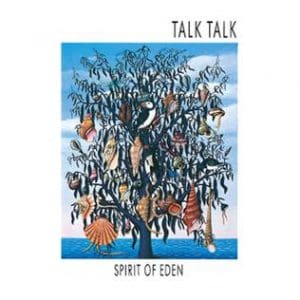 Spirit Of Eden
Spirit Of Eden
Launched 16 Sept 1988
Recorded Wessex Studios, London, 1987-88
Label Parlophone (EMI)
Chart Place UK No.19 and US
The worldwide industrial success loved by The Color Of Spring was a game-changer on two ranges for Speak Speak – it gave them the underlying confidence to discover the furthest reaches of their inventive imaginations, and equally importantly it offered them with the monetary safety to pay for it.
On a flight again from Spain in September 1986 following the Color Of Spring tour, Hollis had instructed supervisor Keith Aspden that there can be no extra dwell exhibits – Speak Speak can be a studio-only band. April fifth and Chameleon Day had been a sign of the ethereal new path that Speak Speak would embrace on Spirit Of Eden, one the place the area between the notes was as vital because the notes themselves.
Phill Brown was put in to engineer the periods, a trippy hinterland designed to recreate the blissed-out recording setting of Color Of Spring alumni Steve Winwood’s band Visitors – (“1am, November 1967”).
Aspden tells Traditional Pop: “All of the home windows had been blocked and the studio was in darkness. Oil projectors, colored washes and bubble lamps created a late 60s psychedelic ambiance. Musicians had been requested to improvise with minimal steering and the numerous varied interpretations had been later reviewed and compiled, after a lot experimentation.
Freedom To Discover
“It was an extended, exhaustive course of requiring seemingly infinite quantities of studio time, a lot of which was discarded within the closing enhancing course of – solely the important components had been allowed to stay.
“It was a really contentious and bruising means of recording, which on the similar time helped seize a freedom of efficiency and interpretation that was Mark’s primary obsession.”
As soon as once more, a number of session musicians had been utilised – a returning Danny Thompson and Robbie McIntosh plus many extra, together with violinist Nigel Kennedy. Session gamers had been requested to document eight takes over pre-assembled drum tracks that may type the premise of the six ‘songs’ on the album; by now, although, all conceptions of conventional track construction had been jettisoned.
With no time constraints and even consideration of funds, the Spirit Of Eden periods at Wessex Studios in London would stretch over the course of a 12 months. As Aspden defined: “With simply Tim and Mark concerned, there was no steadiness, no huge image. They took the reins and drove the coach and horses proper off the cliff.”
However what a lovely freefall into oblivion it was. Classes had been invitation-only affairs – the band’s document firm EMI had been stored very firmly at arm’s size though they had been nicely conscious of the character of the experimentation at hand, and its spiralling prices.
Each conceivable overdubbing possibility was explored by the band; Friese-Greene ultimately labored out that he may make Hollis hit the delete button on disputed contributions merely by mentioning it “sounded a bit like Kajagoogoo”. It was a neat and environment friendly workaround.
A Legislation Unto Themselves
“The world’s turned the wrong way up” begins Hollis on mesmeric opener The Rainbow the place the vocalist shares centre stage with great contributions from harmonica participant Mark Feltham, delicate guitar work and gorgeous chordal transitions on piano that take the breath away.
Hollis’ lyrics are indirect, half-murmured and illusive – by now he was extra within the sound of the phrases themselves than any express which means.
The atmosphere is sustained seamlessly into Eden, atonal notes teased out of varied devices earlier than clanging guitars coalesce into one thing approaching a traditional construction and Lee Harris’ insistent, but understated percussion provides it additional form.
It’s that slashing guitar that lifts this into the stratosphere, battling for area with Hollis within the combine (“Everyone will want any person to dwell by/ Rage on all-powerful.”)
Church-like hymnal organ chords usher within the arrival of Need however the peace is stunningly interrupted on two events by a tumult of organ, guitars and even cowbell. By the tip, it’s a managed cacophony of slashing, swirling chaos.
The impressionistic lyricism of Inheritance returns us to some form of emotional equilibrium, a bit of shelter from the previous storm.
The devastating I Imagine In You, impressed by Hollis’ elder brother Ed and his battle with heroin habit, is made much more poignant if you study of his dying shortly earlier than the discharge of Spirit Of Eden.
A plaintive, mournful Wealth closes the album on a hushed be aware (“Take my freedom for giving me a sacred love”). Hollis sounds battered, but unbowed.
“As soon as upon a time Speak Speak had been a pop band,” mused long-time fan Betty Web page of File Mirror. “Now they’re a legislation unto themselves.”
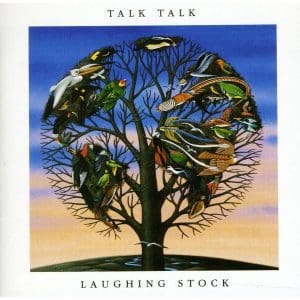 Laughing Stock
Laughing Stock
Launched 16 Sept 1991
Recorded Wessex Studios, London, 1990-91
Label Verve, Polydor
Chart Place UK No.26 and US
Following the collective shrug that greeted their masterpiece, Spirit Of Eden (it scraped into the Prime 20 at No.19 and related single I Imagine In You stalled at No.85), Speak Speak would have been forgiven for shutting up store as soon as and for all. However after a interval spent licking their wounds, Hollis and Friese-Greene returned extra defiant than ever, decided to construct upon and refine the extraordinary method to recording for what was to be their closing album, Laughing Inventory.
The truth that as many as 50 session musicians contributed to Speak Speak’s fifth album however solely 18 made it to the ultimate grasp model is testomony to the quantity of fabric jettisoned in pursuit of sonic perfection.
By now, Speak Speak had been right down to the duo of Hollis and Harris, with unofficial member Friese-Greene sustaining his place as a central a part of the studio outfit. Paul Webb had determined to give up after the exhausting Spirit Of Eden periods.
After leaving EMI, Speak Speak signed to Polydor offshoot label Verve – Hollis was impressed by the very fact the Moms Of Invention as soon as had a house there.
The now-legendary periods for Laughing Inventory had been an much more excessive distillation of the working practices of Spirit Of Eden. Retaining the method of recording in near-permanent darkness, some contributors had been pushed to the purpose of psychological breakdown. It’s been famous that for each minute heard on the ultimate album, an hour’s value of fabric was distributed with.
Defiant Dedication
In an interview with John Pidgeon on the time of the album’s launch, Hollis defined: “The primary time one thing is performed it’s at its best, and the minute you attempt to recreate that it turns into an imitation of one thing that was initially higher. The issue with improvisation is that it meanders away from the purpose an excessive amount of. 90% of what you play shall be garbage.”
Concepts of sin, dying and rebirth proliferate on this poetic document that may show to be Speak Speak’s farewell. With Miles Davis’ jazz fusion masterpiece In A Silent Means talked about as a touchstone, that is an usually skeletal album; sleek, bleak and unafraid of gaping chasms.
Myrrhman drifts in on close to silence and amplifier hiss – this can be a document that’s in no rush to be heard – earlier than the insistent Ascension Day, a splendidly engineered piece from Brown that’s pushed by Lee Harris’ ticking drums, begins to take form and clanging guitars seize us by the throat. Hollis’ lyrics appear extra inscrutable than ever (“Double deal/ A season wrapt, too lax to lapse so quickly”).
The nine-minute After The Flood drifts alongside on insistent drumming and an understated, but throbbing bassline. Taphead is reduce via by shivering, piercing horns and harmonica whereas ruminative nearer Runeii leaves us bereft. An astonishing, if in the end unknowable, document to bow out on.
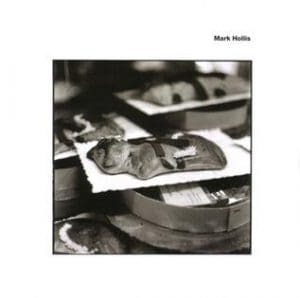
Herd of Intuition, ‘O’rang (1994)
The debut from Lee Harris and Paul Webb’s experimental outfit, pieced collectively from intensive improvisation. Contains Portishead’s Beth Gibbons in addition to The The’s Matt Johnson.
Spoor EP, ‘O’rang (1994)
Harris flexes his muscle mass as a dance music percussionist and world music flavours are added. The unique Charabanc D.I.P impresses.
Fields And Waves, ‘O’rang (1996)
Extra centred on the core duo of Webb and Harris, there’s a Krautrock really feel to the motorik grooves of a few of the materials right here on this 66-minute epic.
Mark Hollis, Mark Hollis (1998)
A spectral and haunting extension of his Speak Speak experimentalism, Hollis’ solely solo LP was a jazz-infused triumph. Stripped-back and understated, it usually showcased his perception within the energy of silence.
Out Of Season, Beth Gibbons and Rustin Man (2002)
Webb and Gibbons collaborate once more, this time on a full album beneath his Rustin Man moniker. Ostensibly dubbed ‘folktronica’, it’s influenced by Nina Simone, Billie Vacation and Nick Drake.
Drift Code, Rustin Man (2019)
Webb takes centre stage as vocalist on Rustin Man’s pastoral second album. His ‘Hollis-meets-Robert Wyatt’ voice is surprisingly affecting. Lee Harris occupies the drum stool.
 Pure Historical past (1990)
Pure Historical past (1990)
Compiled with out the band’s permission, this offered a couple of million copies. It stays the obvious entry level for the uninitiated. Nonetheless, attributable to its launch date, the dearth of Laughing Inventory tracks renders this an incomplete image…*
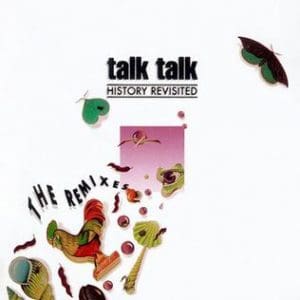 Historical past Revisited (1991)
Historical past Revisited (1991)
The straw that broke the camel’s again. Speak Speak sued EMI for releasing this remix album based mostly on Pure Historical past. There’s little of consequence right here and the remixes provide nothing as revolutionary because the band they’re based mostly on.
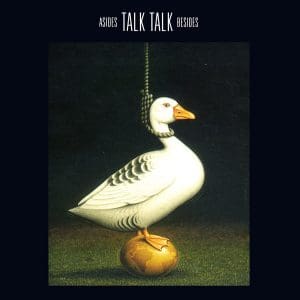 Asides Apart from (1998)
Asides Apart from (1998)
A curate’s egg of prolonged mixes, 12″ dub reboots plus some intriguing demos of Speak Speak, Mirror Man and Sweet, the place you’ll be able to hear how Colin Thurston gave the tracks a pop sheen. The B-sides right here add to the story properly.
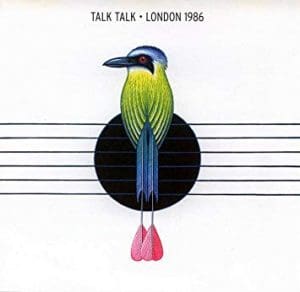 London 1986 (1999)
London 1986 (1999)
Unavailable however ripe for a reissue, this catches Speak Speak in a transitional part. Recorded on 8 Could 1986 on the Hammersmith Odeon, it was their final UK date as they toured The Color Of Spring. A studio-only future lay forward.
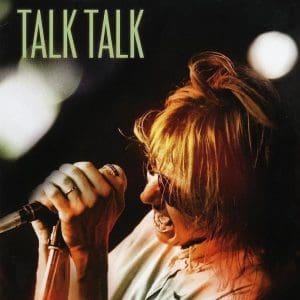 Dwell at Montreux 1986 (2008)
Dwell at Montreux 1986 (2008)
Launched on DVD 22 years after the landmark live performance itself, this captures the band throughout their one and solely look on the fabled jazz pageant with a finely-chosen setlist that takes in highlights from their first three albums.
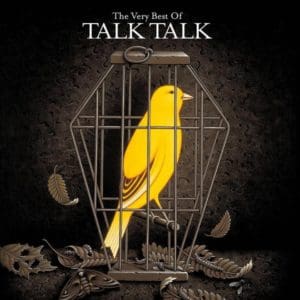 The Very Finest Of Speak Speak Reissue (2025)
The Very Finest Of Speak Speak Reissue (2025)
Adjustments to the unique launch places the band’s biggest hits in chronological order, with a brand new inclusion from their closing album, Laughing Inventory. The reissue shall be out there on black gatefold 2LP and CD on 14 March. Order the gathering right here
Join the Traditional Pop publication
